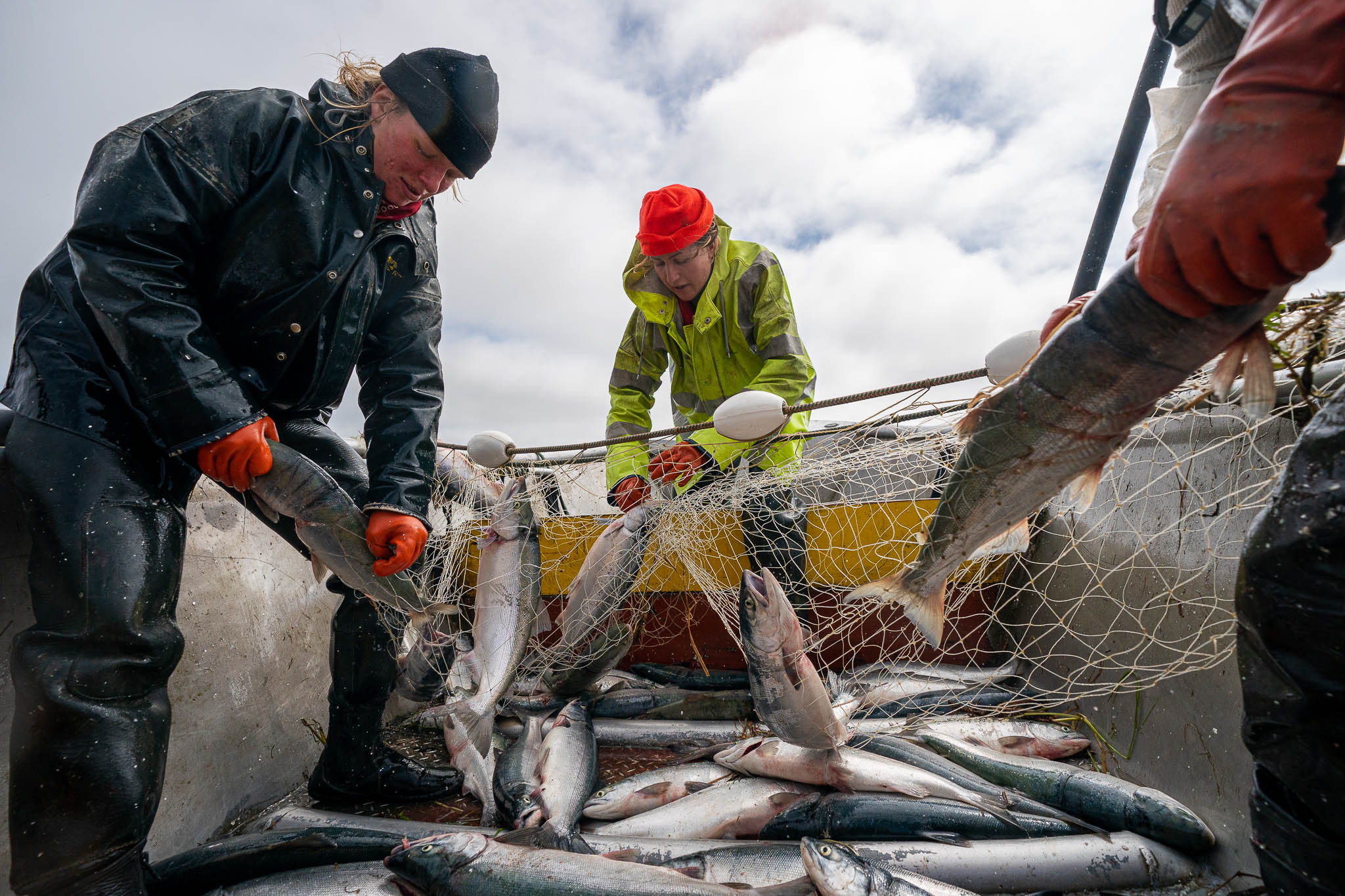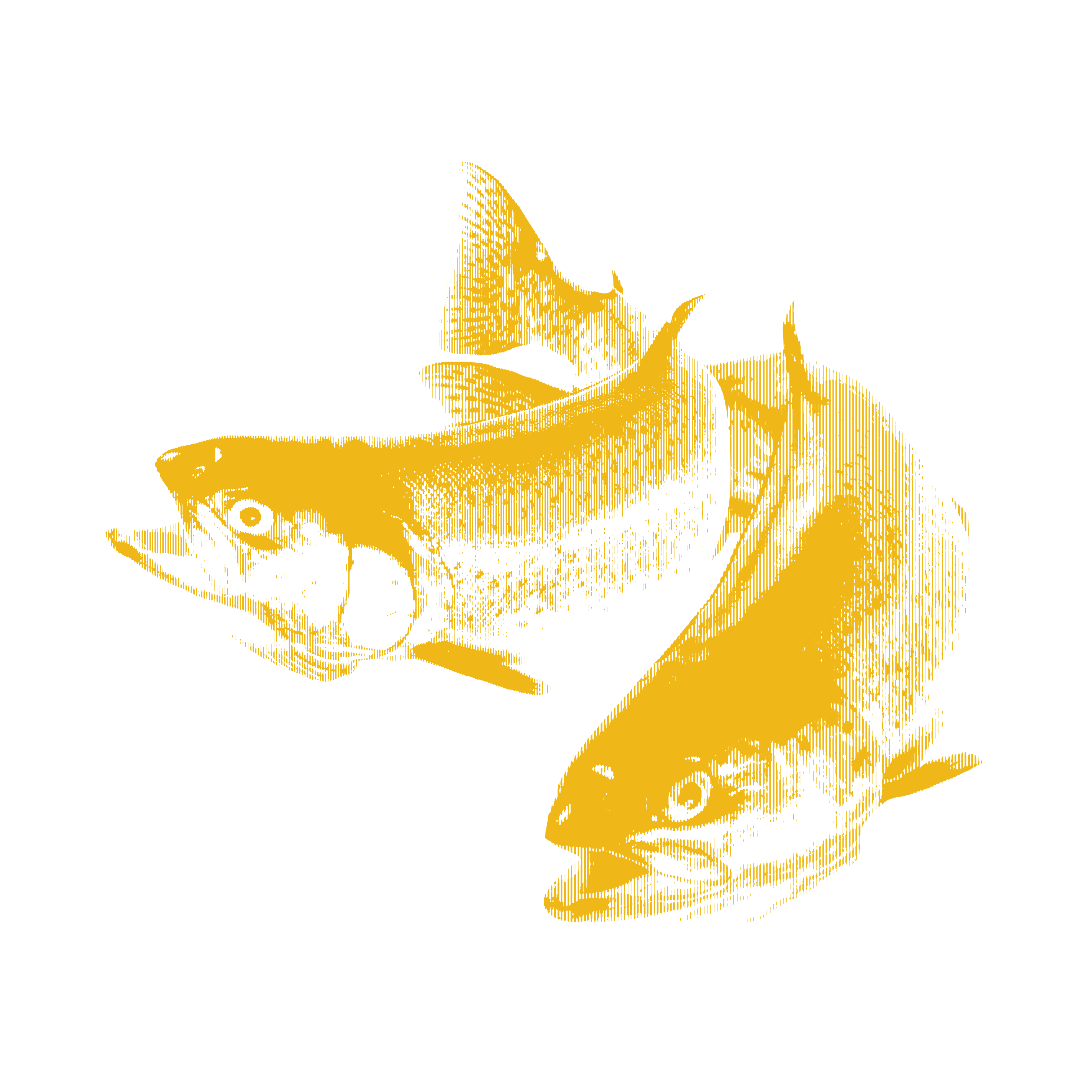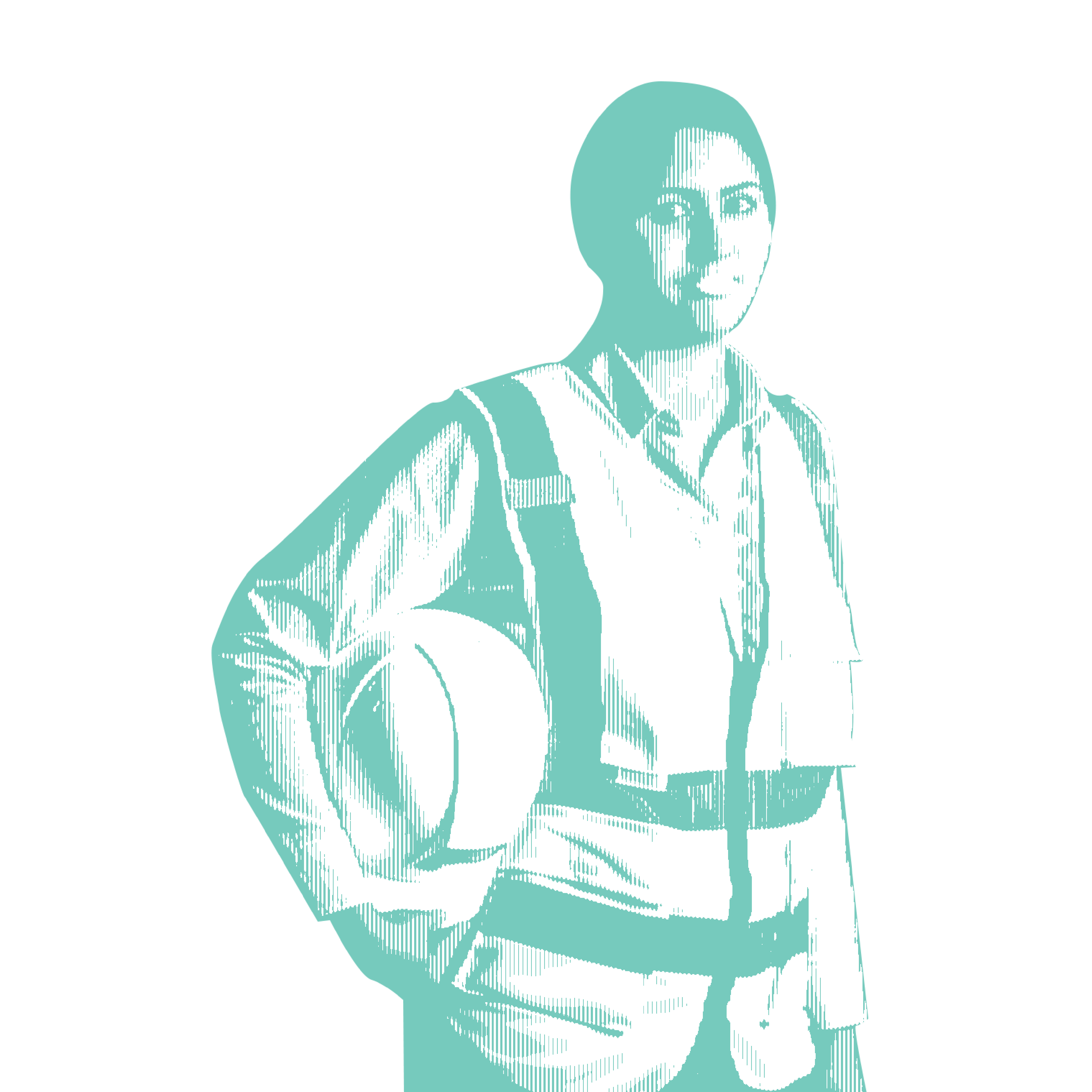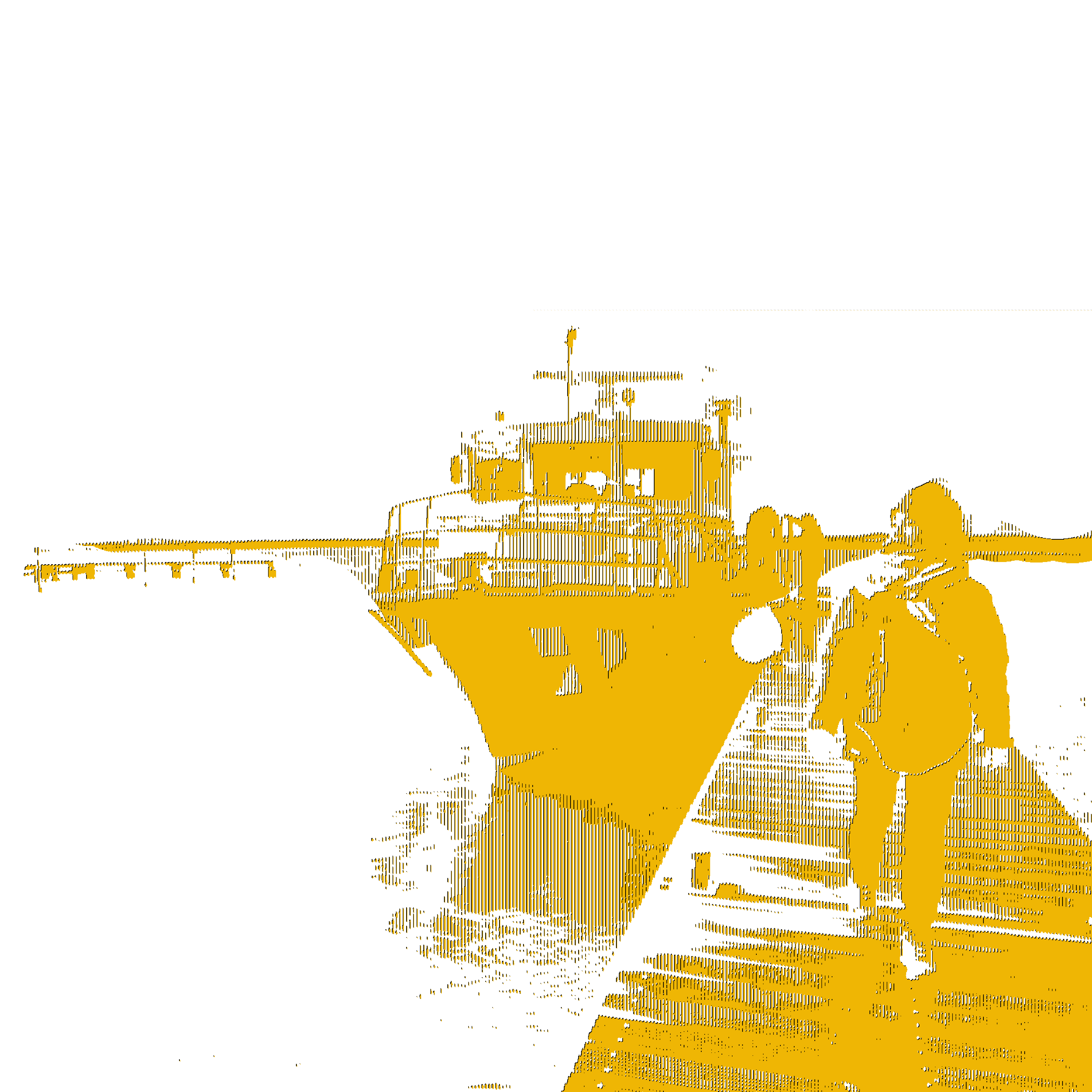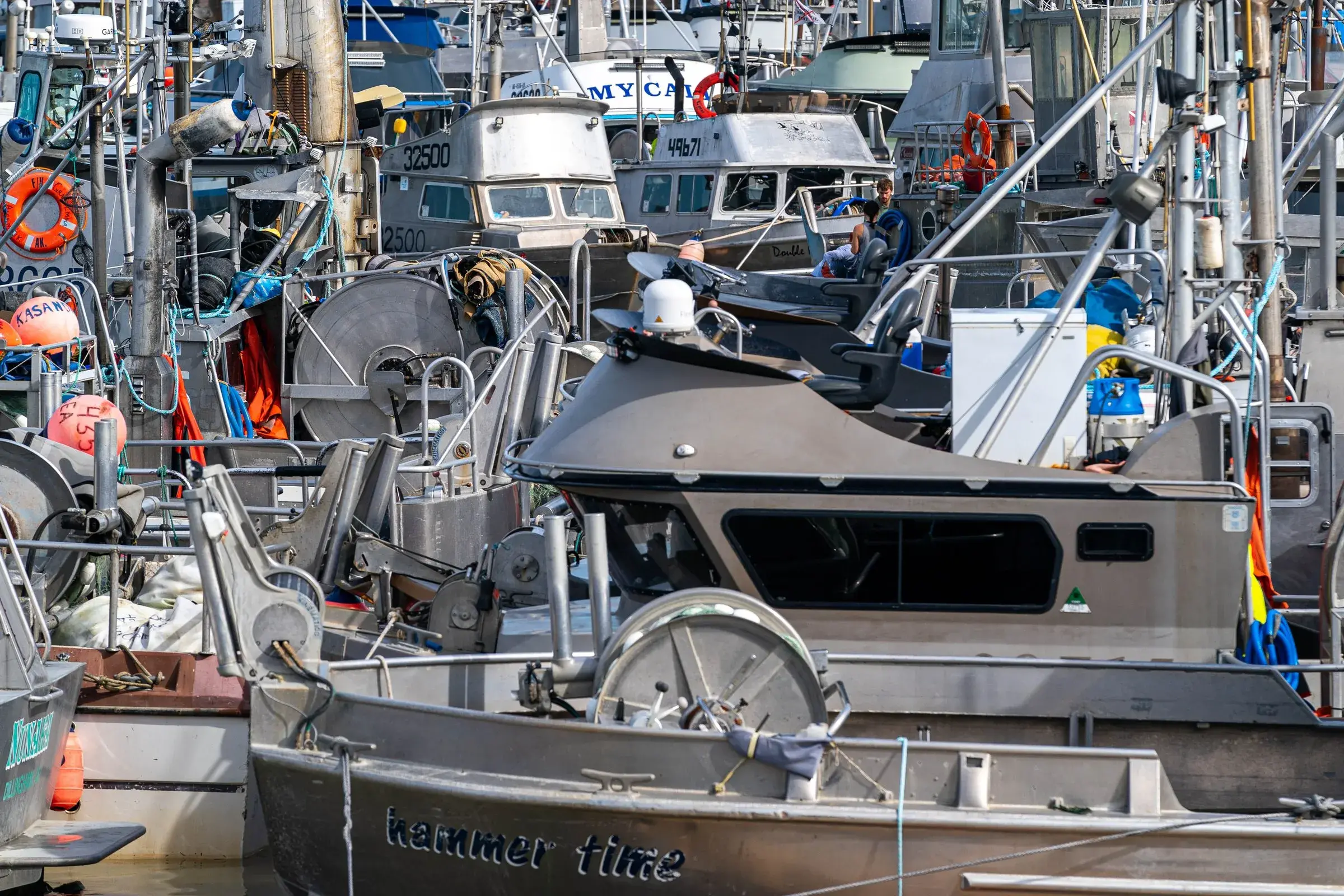
DILLINGHAM, Alaska—In 1975, an Alaska state law, bitterly contested and extensively litigated, wrought a profound change in the Bristol Bay fishery.
It capped the number of people who could fish there, and vested them with permits that could be used each year or sold to the highest bidder.
The state Legislature made the big change two years earlier in an era when many in the seafood industry were worried about oversized fleets chasing then-depressed stocks of salmon.
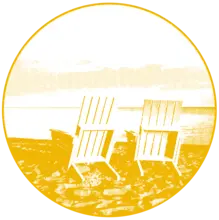
As a nonprofit journalism organization, we depend on your support to fund our nationwide Connected Coastlines climate reporting. Donate any amount today to become a Pulitzer Center Champion and receive exclusive benefits!
This had far-reaching consequences for local bay communities, where many permits once held by local residents have shifted through the decades to fishermen living in urban parts of Alaska or to Washington and other states.
As of 2020, Alaskans hold 44% of the 1,862 drift gillnet fleet permits, and 64% of the 964 permits to fish from beaches with setnets.
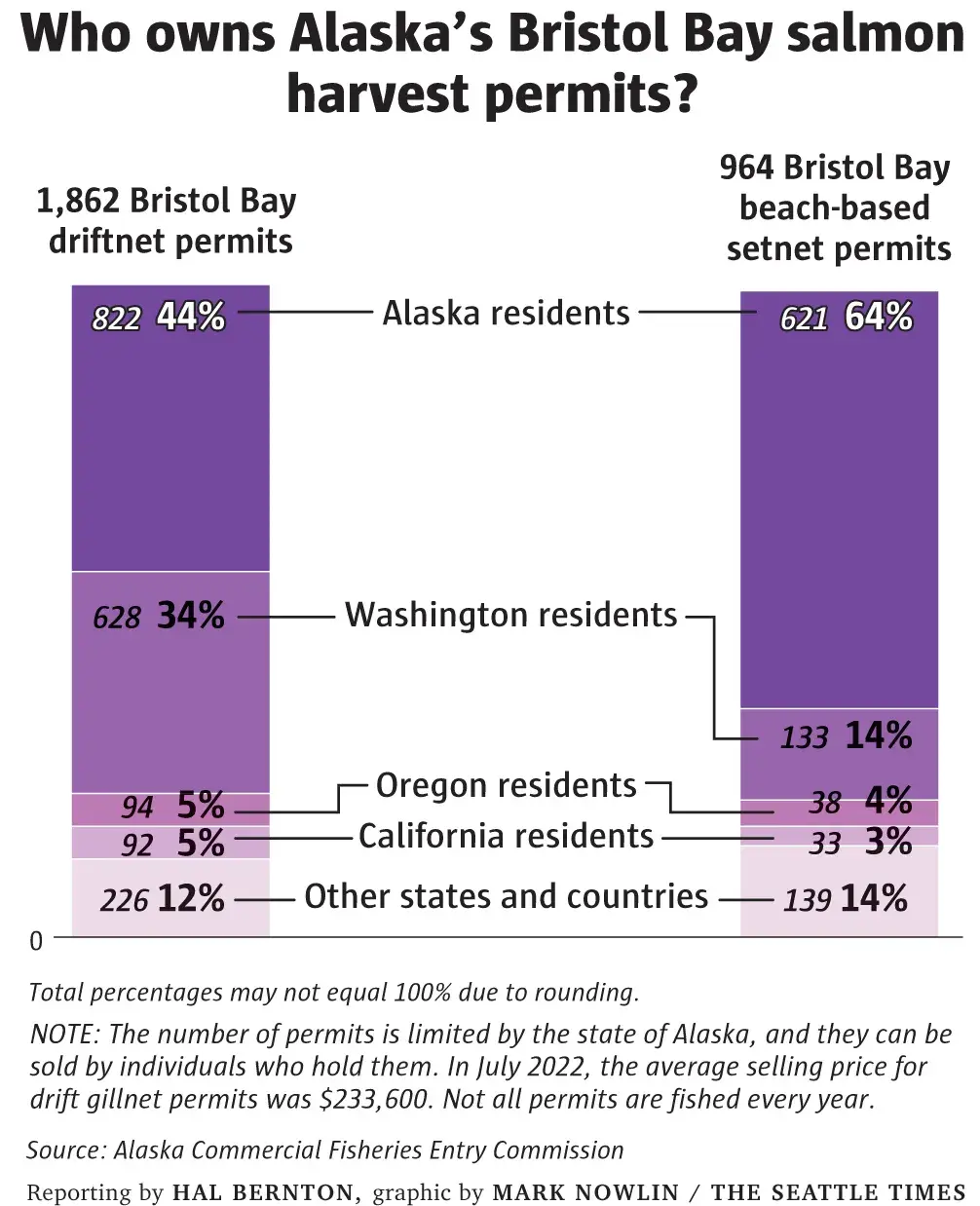
Washington residents had the second-biggest stake in the harvest, with a 34% share of the drift gillnet fleet permits and a 14% share of the beach-based harvests, according to statistics compiled by the Alaska Commercial Fisheries Entry Commission.
Among drift-boat fishermen, there are big differences in annual incomes.
In 2021, the top-grossing 10% of Bristol Bay boat fishermen got paid $456,628 on average for their salmon. That was more than double the fleetwide average of $184,047.
Alaskans that year claimed $118.78 million of the money paid to fishermen, while out-of-state permit holders earned $165.65 million.
Fishermen who opt to sell their permits have been able to fetch big money due to the huge harvests of recent years. In 2021, the average selling price was $195,400.
Permit sales are tracked through the state Commercial Fisheries Entry Commission, and through the decades they document a steep loss in permits held by residents of the Bristol Bay region:
Residents of Bristol Bay communities received 712 drift gillnet permits in 1975. By 2021, they held 308 of these permits.
Residents of Bristol Bay communities received 660 beach-based setnet permits in 1975. By 2021, they held 313.
A few of these permits were forfeited by residents who failed to pay required annual fees. Most permits left the region when the holders moved away or opted to sell to someone who lived elsewhere.
The tiny village of Egegik offers an extreme example of this shift. It sits near a Bristol Bay fishing district that this summer yielded some of the biggest hauls of sockeye.
In 1980, when Egegik had a population of 75 people, 49 residents had either boat or beach-based salmon permits. By 2020, the community had shrunk to only 25 people, and only three of them had salmon permits, according to Commercial Fisheries Entry Commission records.
Some sold their permits to raise money to help feed their families during downturns in the harvests. Many moved away to bigger communities, often outside the Bristol Bay region, when the price of salmon dropped in the mid-’90s, according to Hazel Nelson, a former Egegik resident who now lives in Anchorage.
“You can’t compete with the bigger, faster boats, Nelson said. “The permit system hasn’t worked for us. We are fighting for our survival.”
“I used to fish down there when things were hopping. It’s becoming a ghost town,” said Robin Samuelson, a 72-year-old fisherman based in Dillingham.
Samuelson is chair of the Bristol Bay Economic Development Corp., one of six western Alaska groups that receive—under congressional legislation—annual harvest allocations of pollock, halibut, crab and other offshore North Pacific fisheries.
Samuelson said some of the corporation’s earnings are used to help residents secure salmon permits, buy boats and finance fishing gear.
In 2020, the corporation helped 23 people acquire permits, according to an annual report. So far those efforts have not been enough to reverse the exodus of salmon permits from the region.
In other parts of rural Alaska, Bristol Bay permits also are scarce. In the Yukon-Koyukuk census area, which covers a huge swath across central Alaska, residents hold only five Bristol Bay salmon permits.
Rachel Donkersloot, an anthropologist who grew up in Naknek, wrote a 2021 report for The Nature Conservancy about the Bristol Bay permit shifts. She said that local fishermen, on average, earn less than those from urban areas but often rely a lot more on that income to support their families.
To try to stanch the outflow of permits from rural Alaska, Donkersloot said new approaches are needed.
One option would be apprenticeship programs that allow young people to catch small numbers of fish without permits.
She also proposed the state could buy some permits from aging fishermen, then retain and use them to expand the range of participants.
“Once that right to fish is gone, there goes the knowledge. There goes the skill. There goes the social networks and relationships that allow young people to get practice and opportunity to get into the fishery,” Donkersloot said.



